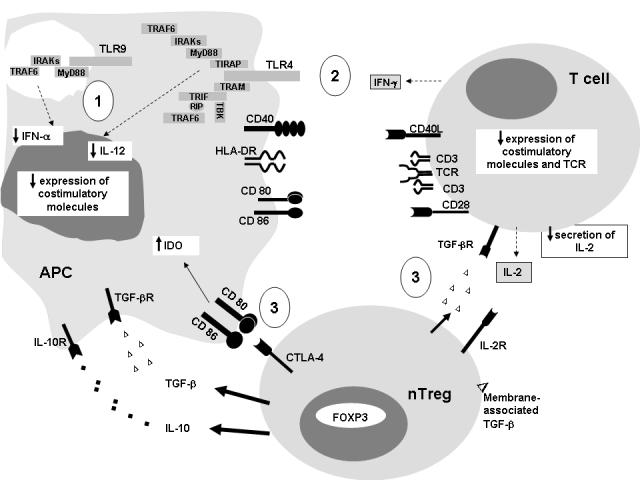Intrinsic immaturity of neonatal DCs. Basal expression of costimulatory molecules is decreased in neonatal APCs. In addition, alterations in the TLR complex, affecting principally TLR4 and TLR9, have been described in neonatal APCs. This could lead to defects in up-regulation of costimulatory molecule expression, as well as cytokine secretion (IL-12, IFN-α) following stimulation with bacterial and/or viral products.
Defective interaction between neonatal APCs and T cells. Defects in activation levels of neonatal T cells could lead to alterations in APC functions, since T cell-mediated signals play a major role in APC maturation/activation. Among the described T cell defects are alterations in IFN-γ and IL-2 secretion in response to TCR-dependent stimulation, decreased expression of CD40L at basal condition and after stimulation, and decreased expression of the TCR complex.
Inhibition by nTreg of both neonatal APCs and T cells. Neonatal nTreg can down-modulate the function of both APCs and T cells through direct and indirect mechanisms. Among these mechanisms are interaction between the CTLA-4 molecule expressed by Treg and the CD80/CD86 molecules expressed by APCs, leading to increased IDO expression; secretion of immunosuppressive cytokines, IL-10 and TGF-β, and expression of membrane-associated TGF-β; consumption of IL-2 by the high-affinity IL-2R expressed by nTreg; and finally, FOXP3-mediated mechanisms that have not yet been identified.

